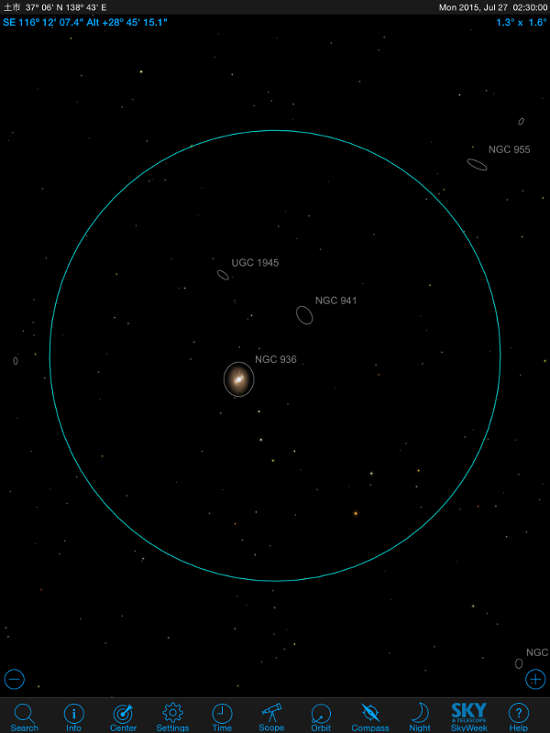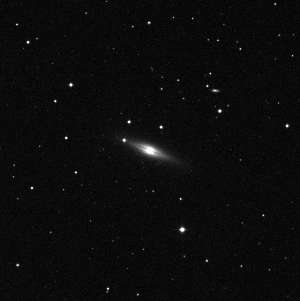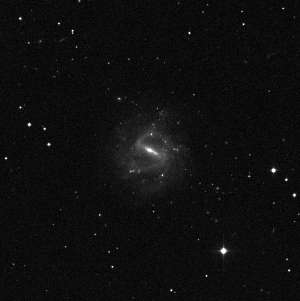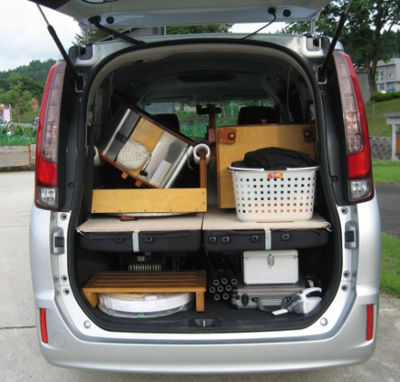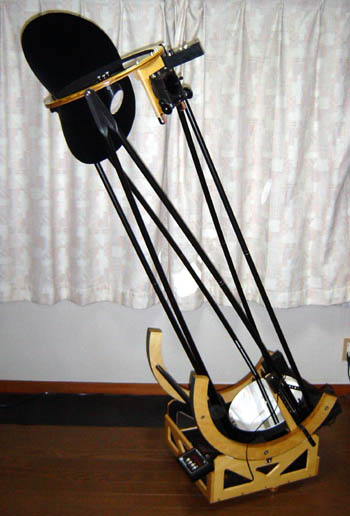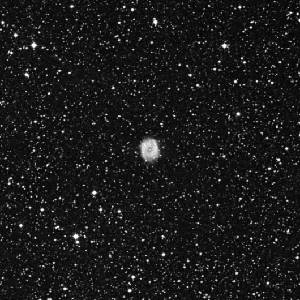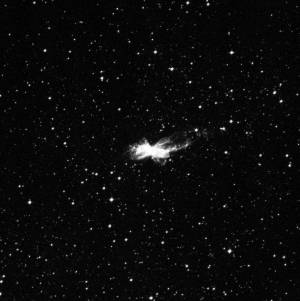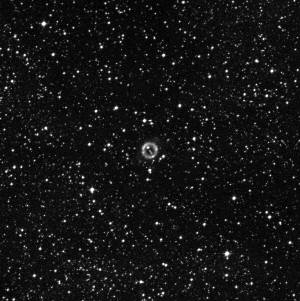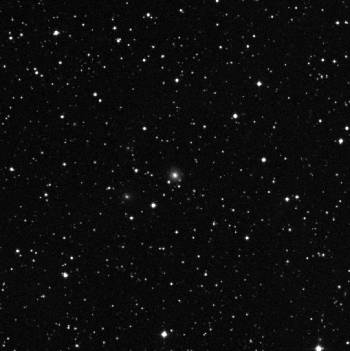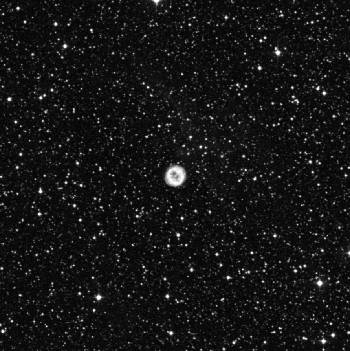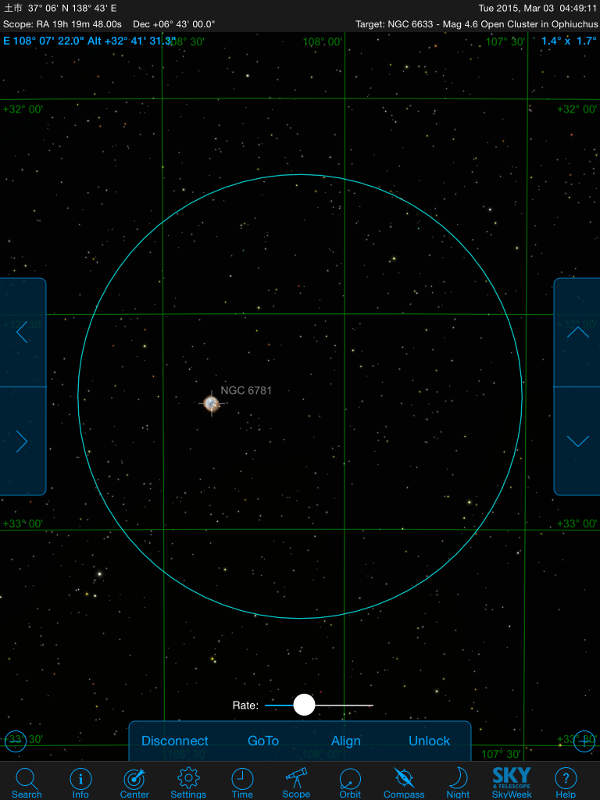Saturday, December 12
At noon the forecast said clear sky continued until the daybreak on Sunday. At dusk the prediction for predawn changed from clear sky to cloudy and rainy weather. I thought the forecast was reliable and decided to go comet hunting at dusk.
I arrived at the site at 8p.m., two hours after the end of the twilight. After enjoying observation of C/2013 X1 PanSTARRS, M33, M42 and Uranus, I started the comet hunting session with NGC1201, a galaxy in the constellation of Fornax. The galaxy was almost the culmination but I dared to sweep the direction.
I have rarely searched in Fornax. In July the constellation rose the southeastern sky at predawn and if the weather permits I search there but July is the rainy season that makes it difficult to sweep the area. I knew that there are lots of galaxies in the constellation but I strongly realized how many galaxies are there to sweet the area. Every time I slightly moved the comet seeker, some galaxies came into the FOV and I have to identify them using SkySafari Pro 4 on the iPad mini 2. It is much easier to confirm them using those gadgets than printed map. In my impression the density of galaxies per area seemed as high as that in Coma Berenices-Virgo area. Actually, on Wednesday I searched the southeastern area of Virgo and identified 38 DSOs per one hour and forty five minutes. However, today I identified 45 DSOs per one hour.
A galaxy group near NGC1399. A circle represents the FOV of 1˚.
The Digitized Sky Survey copyright © 1994
The most impressive object was a galaxy group of NGC1399. I observed 7 galaxies in the same FOV. The darkest one I identified was PGC12194 with a magnitude of 13.7. On Wednesday I detected darker galaxies, NGC4504 and 4784, both are magnitude of 14.0. It is fun to encounter a lot of galaxies but too many of them are tedious; I must spend much time to write them down. I may not feel so, if I stop making a note of DSOs that I identified. At present I continue to making note of DSOs.
Wednesday, December 2
The sky was clear in the same way as the day before yesterday. Snow at the site disappeared but air temperature was the same: -2 ˚C. I began the session with Arcturus, alpha Bootis. The only DSO I identified was M3. As if the resolved stars had been sparkling in the moonlight. At 4:38a.m. seeing got poor suddenly, and I could not help reducing magnification from 97x to 78x. The star image became pinpoint with 78x, the combination of Paracorr and Planocular 30mm.
During the observation I took a break and I aimed my comet-seeker at C/2013 US10. The tails looked longer than those of the day before yesterday thanks to older moon.
Though no DSO was detected except for M3, I was impressed by a blaze of silver white star, Alphecca, alpha Corona Borealis. At home I looked into the spectrum type of the star, and it turned out to be A0. Rightly, my impression agreed with the physical property of the star.
Thursday, November 30
I presumed that there was no snow at the usual observing site where 950 m a.s.l. and headed for the site. As I went up the road, snow appeared on the vegetation. At the site the snow depth was only 2 cm, but no snow on the road. Air temperature was -2 ˚C. The real winter was there and it took 40 minutes to complete setting my telescope up and start the session; I forgot the way I do in winter.
In spite of bright moon with 18 days old, I could see the Milky Way in the constellation of Auriga. I enjoyed the most substantial hunting session in this November. First of all, I trained my comet-seeker at M65. M66 was in the same FOV, but I could not see NGC3628 due to moonlight. I started sweeping the sky from M65.
I identified 17 galaxies including M65 and M66, but all of them except two were 10th magnitude or brighter: two exceptions were NGC4621 (magnitude of 11.5) and 4638 (11.1). If it were not for the moonlight, I could have detected 10 times as many galaxies as the session in the northwestern part of Virgo where I searched.
During the session I encountered C/2013 US10 Catalina by chance. The comet was just rose from the horizon with an altitude of 7˚ at 4:47a.m. local time. If I swept the positon three minutes earlier, the comet was hidden by trees and did not come into the FOV. Making a discovery of a new comet cannot be achieved only by onefs effort, but one has to be blessed with a good luck. That was the case for the discovery of P/2010 V1 Ikeya-Murakami; the altitude at the time of discovery was 7.5˚ above the horizon.
C/2013 US10 was 6th magnitude with two tails. Both tails were faint and short (< 3f) due to moonlight. The apparent diameter of the coma was some 2f with DC of 7.
Sunday, November 8
I had three comet hunting sessions this month. Two of them were under the moonlight at predawn, and the other was under the light pollution at dusk. All were not satisfactorily and I do not write on them. Instead, I will explain the gmultifunctional stepladderh that I began to use last week.
During the session I used to place a clipboard with a pencil and iPad mini 2 on the third seat in my car and I kept open the hatchback. Every time a DSO came into the FOV, I moved to my car on foot and spent several seconds to see the screen of iPad mini 2. I took a note of DSOs that I identified and got back to my comet-seeker to continue the hunting. Sometimes I felt this process comfortable as it was a light exercise that refreshed me, but at other times irksome since too many galaxies should be identified.
To avoid the latter problem, I equipped iPad mini 2, the clipboard, the mechanical pencil and the LED lamp on the stepladder that I usually use. Every session I attach and detach all those gadgets with ease.
Left: iPad mini 2 is placed on the stepladder using an attachment with flexible arm (not detached every session). LED lamp is fixed using Velcro and rubber string. Note that the clipboard is not vertical but inclined to avoid dew or frost condensation on the paper (not seen).
Right: Close-up of iPad mini 2. Red plastic cover is flipped.
Saturday, October 24
This is the 6th comet hunting session since Thursday, October 8, i.e. 9th session this month. Transparency was less than the average, and I could not recognize the Gegenschein. Actually, at the new observing site that I began to utilize since this September Gegenschein is easy to see as far as the sky condition is normal or better.
I was about to start the session from the constellation of Leo. At the lower left Venus (V), Jupiter (J) and Mars (M) rose. 2015 October 23.761 UT. 30sec, ISO 1600. Canon EOS 20Da, EF15mm F2.8 (F2.8). The photo was trimmed.
At 3:20a.m. JST I started the session from Regulus, alpha Leonis. Soon after the start, Venus went through the FOV. The first DSO I identified was NGC2903 but the galaxy was much dimmer than usual because of poor transparency. The second was M96 with M95, and the third was M105 with the companion NGC3384 but I could not notice NGC3389 (magnitude of 11.8) that could have been seen with M105 and NGC3384. The altitude of those galaxies were over 20˚, and they could have been identified with ease.
Though the sky condition was poor and I did not notice many galaxies that are usually observable, I swept the sky comfortably. At 4:05a.m. when M65 came into the FOV, I turned my comet-seeker at a different direction on purpose.
I tried to seek Kreutz Sungrazers. I made a map for this objective and based on that I swept the range of RD -15˚ to -25˚ vertically by checking the RD on the display of Nexus DSC. I began with RA of 7h30m and moved my telescope eastward. When I reached RA of about 9h30m, suddenly, thin could began to spread the area. I returned to M65 and continued hunting, but in five minutes cloud covered the entire sky for an altitude of less than 40˚.

Filament structure in M1.
The Digitized Sky Survey copyright © 1994
I decided to stop searching and to enjoy star watching. I aimed my comet-seeker at M35, M37, h-Ô and M1. What made me surprise was M1. I have ever tried to see the filament structure of M1 with my 46 cm comet-seeker, but I have never. This time I could the filament structure at a glance with x97! I changed eyepiece from Ethos 21 mm x97 to Ethos 13 mm x157. The structure was seen by direct vision. Exactly, it looked like a live crab, because many fragments of filament structure around the nebula, i.e. legs of the crab, moved like a living creature due to scintillation. The feature was completely different from that I have ever seen at other sites: both the shape gas if two plates along a tectonic fault had suddenly slippedh (Deep-Sky Companions: The Messier Objects, OfMera, S. J. 1998) and the uniform brightness in the nebula were not recognized. Instead, both the contour and the internal structures with filament were the same with the photo! I think this difference in appearance of M1 is attributed to the difference of sky condition among the sites. I suppose the background at the present site is much darker. This must also be effective for spotting a darker comet.
Tuesday, October 6 to Thursday, October 8
Disappointing three consecutive days at predawn
Tuesday
I arrived at the site at 2:17a.m. local time after 30 minutesf drive. I was still not accustomed to setting up my comet-seeker stored in my new car, and it took 40 minutes till I stated sweeping the sky. In spite of the moonlight, the sky was very clear and I expected a comfortable hunting session. However, disappointingly, the FOV got cloudy in 10 minutes. I looked over the sky and found that the entire sky was covered with clouds.
I waited for 45 minutes but there was no prospect of clear sky. I gave up waiting and decided to withdraw.
Wednesday
When I got up I hesitated to go comet hunting as clouds covered most part of the sky. In 30 minutes I looked at the sky again, and I decided to leave home for the observing site since the amount of clouds reduced to 30 % of the sky.
At the site, regardless of the moonlight the sky was fine like that of the previous day. Unbelievably, when I completed setting up my telescope the sky has become overcast. After 20 minutes there appeared small gaps among the clouds, and I trained my comet-seeker there to sweep. Nonetheless, the motion of clouds was very high and stars in the FOV disappeared in a few minutes. I had to aim my telescope at another gap. I repeated such a process many times, and could comet hunt for 55 minutes in total. I identified NGC2950 and 2768 but it was not satisfactorily and not a calm session.
Thursday
The forecast predicted cloudy sky at predawn, and I decided not to go the usual site where it takes 30 minutes by car. I did not set an alarm clock, but my body sensor wake me up at 3:20a.m. one hour before the beginning of the twilight; the sky got clear suddenly that made air temperature low, and my body sensor responded the change. I looked out the window in the east and Moon, Venus, Mars and Jupiter in the constellation of Leo was impressive! I left home at 3:29a.m.
I set up my comet-seeker at the site near my house. Soon after that, the amount of clouds increased rapidly, and I could comet hunt only 5 minutes.
As a result, I could comet hunt only one hour and ten minutes for three days at predawn.
Friday, October 2 to Sunday, October 4
The 1st Conference of New Heavenly Body Seekers (Stella Nova)
I attended gThe 1st Conference of New Heavenly Body Seekers (Stella Nova)h held at Nayoro Observatory, northern Japan. Many attendees were professional astronomers who specialize in nova and super nova, but some were amateurs who were nova or super nova seekers, researchers and discoverers. Comet seekers and cometary scientists were minor group, but I enjoyed hearing presentations and having pleasant talk with attendees.
Many professional astronomers wrote papers observing novae or super novae that were discovered by amateurs, or using data obtained by amateurs. One of the most prominent amateur contributors is Koichi Itagaki, who discovered over 100 super novae. The conference implied the celebration of Itagakifs great achievement.
During the conference there were 6 sessions with 18 presentations in total. One of the sessions, gSpecial Sessionh that I thought was the highlight session, consisted of three presentations and each of the stories focused on a nova or a super nova discovered by Itagaki that had been published in Nature!
From right to left: Koichi Itagaki, me (Shigeki Murakami), and Takeshi Miyaji (Chief of Ishigakijima Astronomical Observatory) at the party. All of us wore T-shirts on which the codes of 100 super novae Itagaki discovered.
Photo by Yasuo Sano, Chief of Nayoro Observatory.
I myself gave a presentation entitled gA visual discovery of comets is still possible:
See stars by hearth. I will upload the movie with English subtitles near future. Please look forward to it.
Wednesday, September 23
I had no hesitation to go comet hunting when I got up at predawn, even though some 70% of the sky was covered with cloud as we have few clear sky here in my town. At the site the amount of cloud seemed to be unchanged, but thin cloud spread at a low altitude that made it impossible to search the low part of the sky. I began with Rigel, but in 20 minutes the entire sky except for near the zenith was covered the cloud.
Venus looked like a hazy moon through cloud, and bright stars in Orion blurred picturesquely. I lay down on the road and looked at the Milky Way near the zenith for a while. I knew P/2010 V1 Ikeya-Murakami that passes the perihelion in coming March was in Gemini and someone has already tried to detect it, but could not. The idea came across my mind that I tried detecting P/2010 V1 using my comet-seeker. Luckily, the position of the comet was clear. I aimed my 46 cm-telescope at the position that SkySafari indicated with 97x. Then, I increased the magnification to 291x and peered at the positon, but there was nothing there.
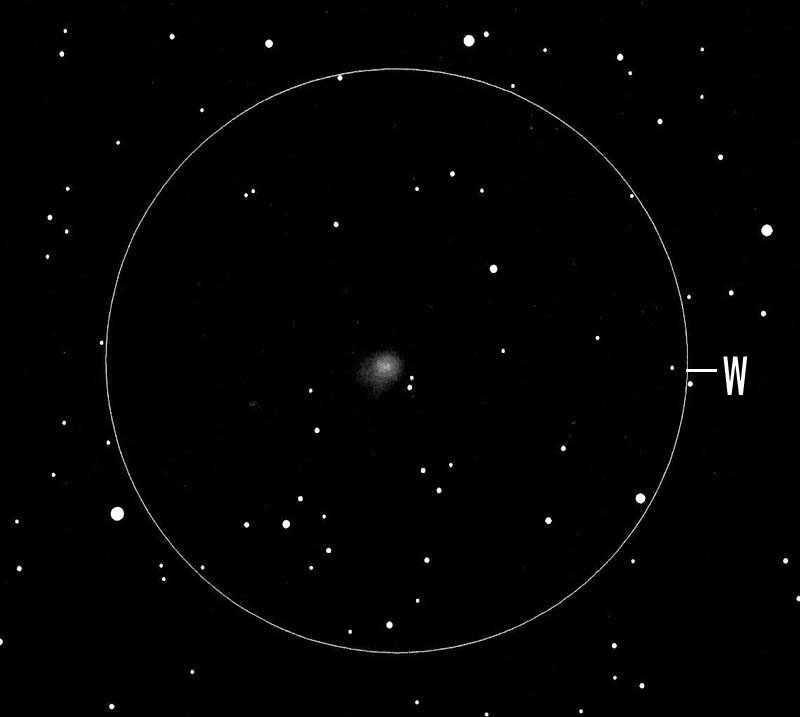
P/2010 V1 Ikeya-Murakami
Sketch was drawn a few days after the discovery by me remembering the image at the time of discovery. FOV=1.1˚
This comet made an outburst to be discovered. I wonder if it may be missed like 205P Gacobini for many years that I observed yesterday or detected with another outburst like that of 5 years ago.
The amount of cloud augmented with time. I cared about the comet and started taking down my comet-seeker 35 before the start of the twilight.
Tuesday, September 22
I arrived at the observing site at 1:41a.m. local time, 2 hours and 24 minutes before the start of the twilight. It was much earlier than usual and this was because I wanted to enjoy observing some comets and DSOs.
The first comet I observed was 205P Gacobini that had been lost for over 110 years since the discovery by the French astronomer, Michel Giacobini (Nice Observatory) in Serpens on 1896 September 4. Re-discovery was made 2008 by two Japanese amateurs, Koich Itagaki (Yamagara) and Hiroshi Kaneda (Sapporo). This year the comet returned for the first time since their re-discovery. Though the perihelion passage was May 2015 (17th magnitude) and the comet was getting fade with time, the outburst was observed at the end of this month that made it possible for me to observe with my comet-seeker.
The comet was not visible with a magnification of 97 as I expected but I recognized it with a magnification of 291. It was faint with a magnitude of 14 to 15. In 2008 I could not observe it due to bad weather, and I observed the comet for the first time this predawn thanks to the outburst.
The second comet I observed was C/2013 X1 PANSTRRS that was much easier to see than 205P with a magnitude of 13. I observed this comet with 97x and I felt that I would never overlook the image when I encounter this object during the comet hunting session. Then, I tried changing the magnification to confirm the effect of magnification on the visibility of the comet. With 78x the comet was somewhat difficult to spot and I might overlook the comet during the session. With 68x it was difficult to notice the comet and I would pass over it. The reason why I use 97x (FOV=1.0˚) instead of 78x (1.1˚) or 68x (1.3˚) is to spot a darker comet, though it reduces the area I can sweep within a limited period of time as a result.
As I was the site with 950 m above sea level, the sky condition was good and I wanted to observe the spiral arm of M81. It was easily visible with 97x, and it turns around the core of this galaxy softly!
After 30 minutes of wonderful observing, I began to sweep the sky from Procyon, alpha Canis Minor. There are few galaxies and other comet like objects in the area I searched, but stars in the FOV was shining with pinpoint image under fairly good seeing and I came across some splendid open clusters. A galaxy in Gemini, NGC2418 was the first comet like object I identified, and the second one was NGC2392, Eskimo Nebula in Gemini. I used to overlook Eskimo Nebula because of its small apparent diameter with intense brightness; the nebula looked like a star. However, this time I noticed it due to higher magnification of 97x. I started to use 97x since last December. I wanted to observe this nebula with higher magnification and changed the eyepiece to Pentax XW 7 mm with 291x. With an aid of good seeing I could see the face of Eskimo!
When an open cluster NGC2420 in Gemini came into the FOV at 2:50a.m. local time, I stopped sweeping the sky to observe two comets. One was C/2014 S2 PANSTRRAS that also made an outburst this month. The comet was 10th magnitude and had a beautiful fan like tail. Wonderful!
Another comet I tried was 141P Machholz whose altitude was 21˚ above the horizon. I could manage to spot the comet with 97x but it was faint and difficult.
After observing the comets I continued searching and Venus came across the FOV. It was too bright to keep staying the FOV. Even with a naked eye, it was brilliant pure-whitely with intense ray, a goddess worthy of the name; I doubted if shadow might be formed by the glow of Venus. In five minutes, I trained my comet-seeker to the southeast to search the Sungrazer comet for 10 minutes.
The eastern sky at 4:35a.m. Sep. 22, 2015 JST when I completed the session.
Drawn by Stellarium
When I finished searching, the constellation of Leo rose on the east with Jupiter, the king of planets, and Mars which made this constellation dignified.
Saturday, September 12
Clear sky! I comet hunted for the first time since July 27. The observing site today was the farmland with an altitude of 950 m above sea level. Air temperature was 12 ˚C and I used chemical heater to warm my toes. Taurus was on the eastern horizon when I comet hunted last in July, but I saw the constellation of Orion at predawn for the first time since then. Time has passed.
I am not very familiar to unloading my comet-seeker from my new car, and I forgot how to do it. It took extra 5 minutes to set up my comet-seeker this time.
Before I began the session, I tried observing Horsehead nebula and I could recognized it without a filter. Then, I started the session with Betelgeus, beta Orionis. There are a lot of open clusters in the area I swept mainly in Monoceros. However, the only comet like object I identified was Hubblefs Variable Nebula. It looked like a comet with a fan shaped tail.
During the session, I took a break to enjoy observing some Messier objects and comets. M42 and M43 were wonderful as usual, but the highlight was M33, a spiral galaxy in Triangulum. The spiral looked dense and clear thanks to high altitude site, but the spiral part I have ever seen was much faint. NGC604, a HII region in M33, was shining in the FOV and many other HII regions were conspicuous. It must have been enjoyable if I would have changed eyepiece, but I gave up to do so as I wanted to save time and to observe comets.
The first comet I tried to observe was 67P/Churyumov-Gerasimenko where Philae succeeded in landing. I aimed my comet-seeker to the comet using SkySafari on iPad mini2. It was easy to see with my 46 cm comet-seeker, but I could not spot NGC2577, a galaxy with the magnitude of 12.5. The angular distance between the comet and the galaxy was 16f. I guessed the magnitude of 67P was 11th.
The other comet I planned to see was 141P Machholz. The angular distance of 67P and 141P was 4.5 degrees. I trained my comet-seeker at 141P with SkySafari 4 Pro, but I could not identify the comet partly because of wrong positon of the comet shown on the display. The left screen shot (below) is the position of 141P by Guide 9, while the right panel is that of SkySafari. There are 141P, i.e. 141P 2-A and 141P 2-H on the Guide 9, but only 141P-A is indicated on SkySafari. The important thing is that the positon of 141P-A is different between Guide 9 and SkySafari. I found at home that 141P-A on SkySafari was not 141P-A but 141P-H. I used SkySafari to aim my comet-seeker at 141P-A that meant I tried to observe 141P-H!
A comparison between Guide 9 and SkySafari 4 Pro. SkySafari showed the wrong positon of 141P. On SkySafari no comet was shown at the actual position of 141P (arrow).
I have confirmed that the positons on Guide 9 are correct and those of SkySfari are wrong. At the correct position there is no comet on SkySafari as shown by an arrow. Even so, 141P-A and 141P-H were in the same FOV that means 141P was too dark and/or defused to notice. At any rate, I could not observe 141P.
During the session, I noticed ISS flew toward the east and Venus, Mars and thin moon rose. It was a satisfying session.
Sunday, September 6
I have conducted no comet-hunting session at all since July 27 due to unfavorable weather. Air temperature has been low since the middle of August and we have nothing but cloudy and rainy days.
A good news is that I got a persmission to use a new observing site with an altitude of some 1000 m above sea level. The site is in a farmland and owners permitted me observing there at night. I used to have observed at similar sites, but one of the sites, a pasture, was banned to enter because of prevention for foot-and-mouth-desise. I have mainly visited there in autumn, since night time is long; in winter the site is unaccessable due to heavy snow. I used to have arrived the site at dusk and comet hunted before I got a sleep in my car. Then, I got up at wee hours and had a predawn comet-hunting session.
During my sleep, I put the telescope cover on my comet-seeker to keep out dew or frost condensation. The cover that was tailor-made at a local tent manufacturer was wrorn out and I bought a new one from Astrosystems, Colorado, USA.
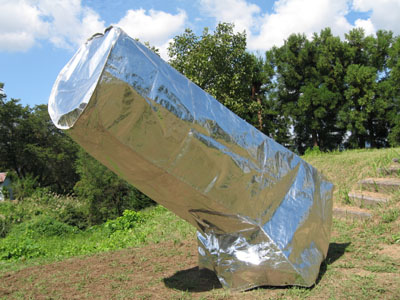
Old telescope cover (tailor made)
Telescope cover made by Astrosystems.
http://www.astrosystems.biz/covers.htm
Telescope cover I bought.
1) cover for secondary mirror, 2) draw cord, 3) storage bag, 4) telescope coer.
Logo on the cover.
I believe there are a lot of fine days this autamn and am looking forward to observing at the new site with the brand new telescope cover.
Sunday, August 9
It has been very hot since the middle of July with maximum temperatures of 30 to 36˚C. There were some fine days but the sky condition has been poor and I gave up comet hunting. For instance, I got up at predawn yesterday, but the sky looked white as humid and duty air defused moonlight.
A good news is that I finally identified the source of the glight pillarh that I wrote in the dairy on May 30. In June I drove around Ishiuchi area in Minamiuonuma-City (the area gAh in the figure below) but strangely, I could not specify the source (at first I suspected the sport facility but it was innocent). Last week I suspected the service area of the highway in the area A, Shiozawa-Ishiuchi, and I went to there; however no light source was found. Then, I went up to a ski field by car that is indicated as the point gBh in the figure, Ishiuchi-Maruyaka, and looked down the area A. Surprisingly, there existed no light source again. At the point B I looked at the west where my observing area is, but the sky was dark. The only possibility is that the source existed between the point B and the observing area. At the next moment, a suspect came across my mind.
Area map of my observing sites and information on the light source.
A: potential light source area, B: a ski field where I went up to find the source, and C: actual place where the light source existed.
A road that connects the area A and the area of my observing sites, Route 353, was closed for a while because of a landslide. The landslide was a large scale and it takes long time to complete the recovery construction. The construction site must be lit up for safety. I decided to drive through the Rote 353.
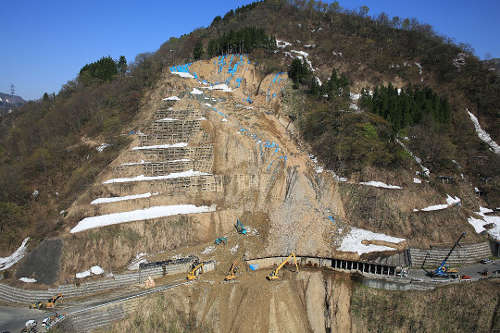
The site of the landside.
Original photo http://www.pref.niigata.lg.jp/tokamachi_seibi/1356771341657.html
The construction site with a lamp. There were many lamps there.
The image is taken from the drive recorder installed on my car.
There it was! The source of the light pillar was the construction site in the mountain area. That explained I could not specify it easily. Unfortunately, I cannot claim to turn off the light as it is set up for safety. But it is sure that it disappears when the road became completely safe after the construction. I have to be patient.
Monday, July 27
I conducted the Julyfs fifth comet hunting session this predawn. I was getting used to unload my comet-seeker from my new car. It took 15 minutes until I completed the collimation of the optics after I arrived at the site. Usually, additional 10 minutes is required before the start of the session to set up the digital setting circles, pick up an eyepiece and wearing the hooded observing vest. The vest is sometimes too hot in summer, but it is a must under the moonlight or to avoid streetlamps nearby. I noticed the lightweight (summer) version of the vest has been released, and I want to buy it.
Prior to the session I observed Uranus with a magnification of 255. I expected to observe three 14th magnitude satellites, but actually I could two of them: Titania and Oberon. It was difficult to observe another satellite, Ariel, since angular distance from Uranus was only 13h in addition to poor transparency. I thought I could see it with higher magnification, but I gave up to change the eyepiece as I did not want to spend more time to observe Uranus and the satellites.
Uranus and three 14th magnitude satellites. Screen shot from the SkySafari 4 Pro.
Zenith down.
I started the session from Uranus with a magnification of 97 (Ethos 21 mm), but in 15 minutes cloud spread the eastern sky. I aimed my comet-seeker at the south. In 15 minutes the eastern sky got clear and I searched the east, i.e. some 5 degrees north of Uranus, again. The first DSO that I came across was NGC718, a galaxy in Pisces with a magnitude of 11.7. The next one was NGC936 but I noticed there is a companion, NGC941, on the display when I confirmed NGC936 using SkySafari 4 Pro. I could manage to see NGC941 (magnitude of 12.2) but this galaxy was limit of my telescope under the poor sky condition like today; I could never notice it during sweeping the sky.
